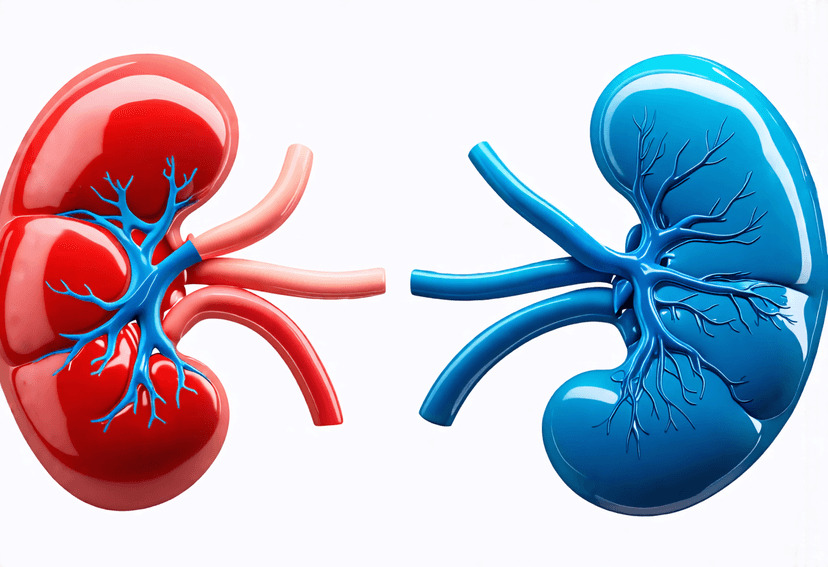
Read the Astonishing Benefits of Regular Physical Activity for Children!
03 Nov, 2023
 Healthtrip Team
Healthtrip TeamIn today's digital age, where children often spend more time indoors glued to screens than playing outside, the importance of regular physical activity for children cannot be overstated. Physical activity is not just essential for adults; it plays a vital role in the healthy development of children as well. In this comprehensive guide, we will delve into the numerous benefits of regular physical activity for children, emphasizing the importance of fostering an active lifestyle from a young age.
1. Physical Health Benefits
Most popular procedures in India
a. Weight Management: One of the most obvious benefits of regular physical activity for children is weight management. In an era when childhood obesity rates are on the rise, physical activity helps children maintain a healthy weight. Engaging in activities like running, cycling, swimming, and team sports burns calories and prevents excess weight gain.
b. Stronger Muscles and Bones: Physical activity strengthens children's muscles and bones, promoting healthy growth and development. Weight-bearing exercises, such as jumping, running, and climbing, stimulate bone growth and density, reducing the risk of osteoporosis later in life.
Wellness Treatments
Give yourself the time to relax
Lowest Prices Guaranteed!

Lowest Prices Guaranteed!
c. Improved Cardiovascular Health: Regular physical activity enhances cardiovascular health in children by improving heart and lung function. Activities like jogging, swimming, and dancing help increase the efficiency of the heart and reduce the risk of heart disease later in life.
d. Enhanced Motor Skills: Physical activity contributes to the development of fine and gross motor skills in children. Activities like playing catch, climbing, and riding a bike improve coordination, balance, and overall motor skills.
2. Mental Health Benefits
a. Reduced Stress and Anxiety: Physical activity has a direct impact on children's mental health. It releases endorphins, which are natural mood elevators, helping to reduce stress and anxiety. Children who engage in regular physical activity tend to be more resilient and better equipped to handle life's challenges.
b. Improved Concentration and Academic Performance: Studies have shown that regular physical activity can boost cognitive function and concentration in children. Physical activity increases blood flow to the brain, leading to improved memory, problem-solving skills, and academic performance. Encouraging physical activity can have a positive impact on a child's educational journey.
c. Enhanced Self-Esteem and Confidence: Participating in physical activities allows children to set goals, overcome obstacles, and build self-esteem and confidence. As they achieve new milestones and improve their skills, they gain a sense of accomplishment and pride in themselves.
d. Better Sleep: Regular physical activity can also contribute to better sleep patterns in children. A tired body and mind are more likely to relax and rest well during the night, leading to improved overall sleep quality.
3. Social Benefits
a. Teamwork and Cooperation: Engaging in team sports or group activities fosters essential social skills, such as teamwork and cooperation. Children learn to communicate effectively, resolve conflicts, and work together to achieve common goals.
b. Building Friendships: Physical activities provide opportunities for children to make new friends and build meaningful relationships. Shared interests in sports or recreational activities can form the basis of lifelong friendships.
c. Reduced Social Isolation: Participating in physical activities can help combat social isolation and loneliness, which can be especially relevant in today's digital age. By joining clubs, teams, or community events, children can connect with others who share their interests.
4. Lifestyle and Habits
a. Establishing Healthy Habits: Introducing children to regular physical activity sets the foundation for a healthy lifestyle. When children learn to enjoy being active, they are more likely to carry this habit into adulthood, reducing the risk of sedentary-related health issues.
b. Screen Time Reduction: Encouraging physical activity can also help reduce excessive screen time. Limiting the time spent in front of screens and replacing it with outdoor play or structured activities is essential for a child's overall well-being.
5. Long-Term Benefits
a. Disease Prevention:The benefits of regular physical activity in childhood extend into adulthood. Active children are more likely to grow into active adults, which reduces the risk of chronic diseases such as obesity, diabetes, and cardiovascular disease.
b. Lifelong Enjoyment: Children who grow up enjoying physical activity are more likely to continue being active throughout their lives. This can lead to a higher quality of life in adulthood and increased longevity.
6. Encouraging Physical Activity in Children
Now that we understand the numerous benefits of regular physical activity for children, let's explore some strategies for encouraging and promoting an active lifestyle:
a. Be a Role Model: Children often emulate the behavior of their parents and caregivers. If you lead an active lifestyle, your children are more likely to follow suit. Set an example by engaging in physical activities together as a family.
b. Provide a Variety of Activities: Expose your children to a variety of physical activities, including sports, outdoor play, and indoor games. This allows them to discover their interests and develop a well-rounded set of skills.
c. Make It Fun: Make physical activity enjoyable by incorporating games, challenges, and playfulness into the experience. Focus on the process rather than the outcome to keep children engaged and motivated.
d. Encourage Unstructured Play: Unstructured playtime, where children can explore and use their creativity, is just as important as organized activities. Allow them to play freely, whether it's building forts, climbing trees, or playing in the sand.
e. Limit Screen Time: Set reasonable limits on screen time to create opportunities for physical activity. Use screen time as a reward for completing physical activities or chores.
f. Join Sports Teams or Clubs: Enroll your child in sports teams, clubs, or classes that align with their interests. This provides structured opportunities for physical activity and social interaction.
g. Be Supportive, Not Pushy:Encourage your child to be active, but avoid pressuring or over-scheduling them. It's important that physical activity remains a positive and enjoyable experience.
Regular physical activity is a crucial component of a child's healthy development. It offers a multitude of physical, mental, social, and long-term benefits that set the stage for a fulfilling and healthy life. As parents, caregivers, and educators, it is our responsibility to prioritize and promote physical activity in children's lives. By doing so, we can help them thrive both now and in the future, ensuring they grow into healthy and well-rounded individuals. So, let's encourage our children to get moving, explore the outdoors, and embrace the joy of an active lifestyle.
Related Blogs

Kidney Disease in Children
Understand kidney disease in children and its treatment options

Adenoidectomy Surgery: A New Lease on Life
Learn how Adenoidectomy surgery can improve overall quality of life,

Revolutionize Your Mobility: Hip Replacement Surgery
Get back to your active lifestyle with our expert hip

Neck Pain in the Workplace: Prevention and Treatment
Tips and strategies for preventing and treating neck pain in

Neck Pain and Sleep: The Connection
Understanding the link between neck pain and sleep and how

The Importance of Posture for Neck Health
How good posture can help prevent neck pain and improve










